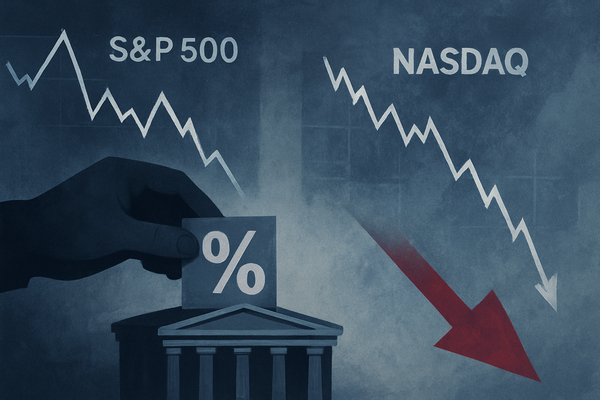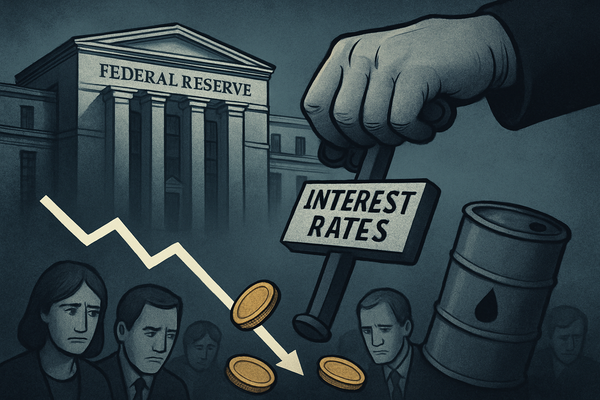Tether Makes Bold $1.5 Billion Foray into Commodity Financing, Reshaping Energy Sector Credit

In a significant move poised to redefine the landscape of commodity financing, Tether, the issuer of the world's largest stablecoin, USDT, has announced a substantial credit extension of approximately $1.5 billion to the broader commodities sector. This strategic pivot, revealed around November 14, 2025, signals Tether's aggressive expansion beyond its core stablecoin operations and into the vital arteries of global trade, particularly impacting energy commodity financing. While not exclusively dedicated to oil, this considerable capital injection is expected to provide much-needed liquidity and alternative financing options to an industry often underserved by traditional banking institutions.
This substantial commitment comes at a crucial time for the commodity markets, which have seen a retrenchment of traditional banks due to increased regulatory burdens and risk aversion. Tether's initiative aims to fill this growing void, offering faster and more flexible capital solutions to commodity traders and smaller firms that often struggle to secure conventional credit. The move underscores a broader trend of alternative finance providers leveraging innovative structures to support real-world economic activities, with profound implications for how energy and other essential commodities are traded and financed globally.
Detailed Coverage: Tether's Strategic Entry into Commodity Trade Finance
Tether's journey into the commodities sector began with a more modest but highly symbolic transaction in October 2024. The company disclosed a $45 million deal for the physical trade of 670,000 barrels of Middle Eastern crude oil, involving an unnamed "publicly traded oil 'super-major'" and a "top-tier commodity trader." This initial foray, structured as a short-term product prepayment, highlighted Tether's intent to inject efficiency into traditional commodity markets by utilizing its USDT stablecoin and leveraging its trade finance division. This initial investment was funded directly from Tether's profits, distinct from the reserves backing its stablecoin.
Building on this foundational step, the recent announcement around November 2025 of a $1.5 billion credit extension marks a dramatic escalation of Tether's ambitions. This credit is earmarked for a diverse range of commodities, including oil, cotton, wheat, and other agricultural products, demonstrating a comprehensive approach to commodity trade lending. Tether CEO Paolo Ardoino indicated plans for "dramatic" further expansion in this domain, with ongoing discussions with various companies in the sector for lending opportunities.
The key players in this evolving scenario include Tether itself, acting as a disruptive financier, and numerous unnamed "commodities traders" and "smaller firms" that stand to benefit from this new source of capital. Traditional banks, which have historically dominated commodity financing but have increasingly scaled back, represent the incumbent system that Tether is challenging. Initial market reactions suggest a recognition of Tether's "big bet" and "strategic shift," though some firms have reportedly shown hesitation in borrowing directly in USDT rather than traditional US dollars, citing concerns over stablecoin volatility and regulatory uncertainties. However, Tether's growing market influence and the sheer scale of its available capital are expected to overcome much of this reluctance.
Impact on Public Companies and Market Dynamics
Tether's significant credit extension is set to create both winners and losers within the energy and broader commodity markets. Smaller commodity trading firms and those operating in less liquid segments of the oil sector, which frequently encounter difficulties in securing financing from traditional banks, are likely to be among the primary beneficiaries. Access to faster, more flexible capital from Tether could enable these firms to expand their operations, take advantage of market opportunities, and compete more effectively against larger, more established players. This could also provide a lifeline to certain oil and gas exploration and production companies (E&P) that might find it challenging to secure project financing through conventional channels.
Conversely, traditional banks that have historically provided commodity trade finance may find their market share eroded. As alternative lenders like Tether step in with competitive and innovative financing solutions, traditional financial institutions could face increased pressure to either adapt their offerings or risk losing clients. While major global banks (e.g., JPMorgan Chase (NYSE: JPM), Citi (NYSE: C)) have vast resources, the niche of smaller commodity trading finance has become less attractive to them, creating the very gap Tether aims to fill. For publicly traded energy companies, particularly those involved in trading or with significant working capital needs for commodity inventories, Tether's offering presents an additional, potentially more agile, financing avenue.
The influx of capital could also indirectly affect the broader energy market by potentially stabilizing supply chains and facilitating quicker transactions, which might influence commodity prices. Companies involved in energy infrastructure and logistics could also see increased activity if more financing leads to greater trade volumes. While specific publicly traded oil companies receiving credit are not disclosed, the availability of this capital could provide a competitive edge to those willing to engage with new financing models, potentially boosting their operational capabilities and market positions.
Wider Significance and Industry Transformation
Tether's $1.5 billion credit extension to the commodities sector is not an isolated event but rather a potent manifestation of several broader industry trends. It squarely addresses the "de-banking" phenomenon, where traditional financial institutions have reduced their exposure to commodity trading due to stringent regulations and higher capital requirements post-financial crisis. This has created a significant funding gap that alternative finance providers, including those from the cryptocurrency space, are now aggressively seeking to fill. It signifies the increasing integration of crypto-native entities into traditional finance, moving beyond speculative trading to provide tangible economic utility.
The ripple effects of this move could be extensive. Competitors within the stablecoin market and other crypto-lending platforms might be incentivized to explore similar ventures, potentially leading to a more crowded and innovative commodity finance landscape. This could also spur traditional banks to re-evaluate their risk appetite and operational efficiencies in commodity trade finance, or to explore partnerships with fintech and crypto firms. From a regulatory perspective, Tether's growing involvement in a systemically important sector like commodities will undoubtedly attract heightened scrutiny. Regulators worldwide will likely examine the implications of stablecoin-backed lending on financial stability, market integrity, and anti-money laundering frameworks, potentially leading to new policy guidelines or even specific regulations for crypto-commodity financing.
Historically, periods of credit crunch have often led to the emergence of non-traditional lenders. This situation echoes past instances where specialized funds or trading houses stepped in when mainstream banks pulled back, albeit with a modern twist involving digital assets. The move also highlights the evolving nature of capital itself, with stablecoins like USDT increasingly being seen as a viable medium for large-scale, cross-border financial transactions, challenging the traditional dominance of fiat currencies in international trade.
What Comes Next: Evolving Market Opportunities and Challenges
In the short term, Tether's aggressive push into commodity financing is expected to intensify competition within the sector. Firms seeking capital for oil, gas, and other commodity trades will have a broader array of options, potentially driving down borrowing costs and increasing the speed of transactions. We may see a gradual increase in the acceptance and utilization of USDT for trade finance, particularly among smaller and more agile trading houses. This could lead to a more efficient, albeit complex, global commodity market where digital assets play a more pronounced role in liquidity provision.
Looking further ahead, the long-term possibilities include a significant restructuring of commodity trade finance, with alternative and digital asset-backed solutions becoming a mainstream component. Tether's continued expansion could pave the way for other stablecoin issuers or decentralized finance (DeFi) protocols to enter this space, fostering an even more diverse ecosystem of lenders. This could lead to a more resilient and liquid commodity financing market, less susceptible to the cyclical whims of traditional banking.
However, challenges remain. Regulatory clarity is paramount; the lack of a unified global framework for stablecoin lending could pose significant hurdles. Market participants will also need to navigate the inherent volatility of the broader cryptocurrency market, even with stablecoins, and address operational risks associated with digital asset transactions. Opportunities will emerge for technology providers specializing in blockchain-based trade finance solutions, risk management for digital assets, and compliance tools. For traditional banks, the challenge will be to adapt, innovate, or collaborate to remain relevant in an increasingly dynamic financing environment.
Comprehensive Wrap-up: A New Era for Commodity Finance
Tether's $1.5 billion credit extension to the commodities sector, including its strategic focus on oil, represents a watershed moment in financial markets. It unequivocally signals Tether's ambition to transform from a mere stablecoin issuer into a significant global financial intermediary, leveraging its substantial profits and digital asset infrastructure to provide real-world economic utility. This strategic pivot addresses a critical lending gap left by traditional banks, offering a new lifeline to commodity traders and energy companies that require agile and accessible capital.
Moving forward, the market will undoubtedly be more dynamic and multifaceted. The integration of stablecoins into commodity trade finance introduces new efficiencies but also new complexities and regulatory considerations. This event underscores a broader trend where digital assets are moving beyond speculative investments to become foundational elements of global commerce. The lasting impact could be a more diversified, resilient, and potentially more equitable commodity financing landscape, where smaller players have better access to capital.
Investors should closely monitor several key developments in the coming months. Regulatory responses to stablecoin lending in traditional sectors will be crucial, as will Tether's performance in managing its credit portfolio and the broader adoption rates of USDT in commodity trade settlements. The evolving competitive landscape, with potential entries from other crypto entities or adaptations by traditional banks, will also be a critical area to watch. This marks not just a new chapter for Tether, but potentially a new era for commodity finance itself.
This content is intended for informational purposes only and is not financial advice



